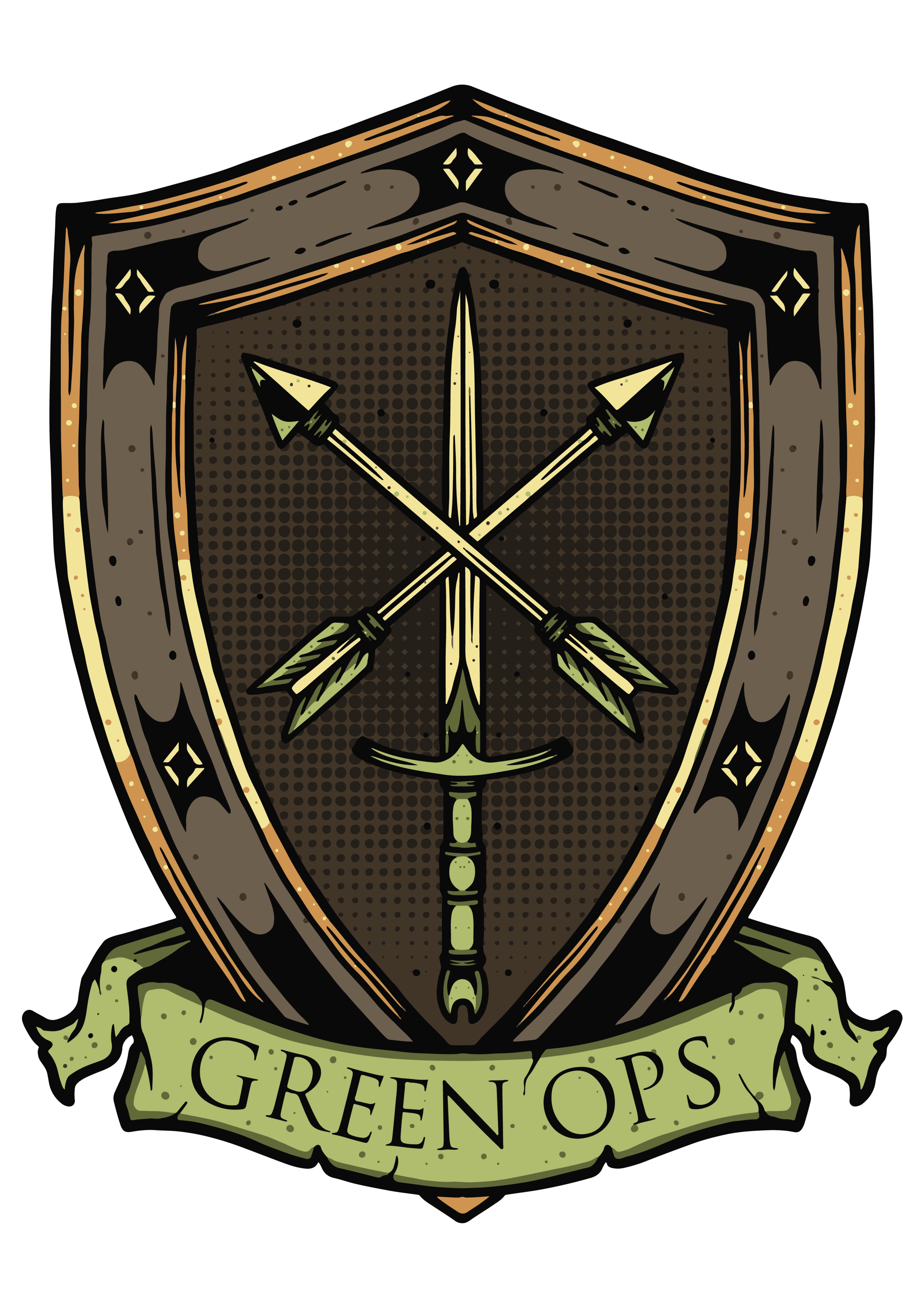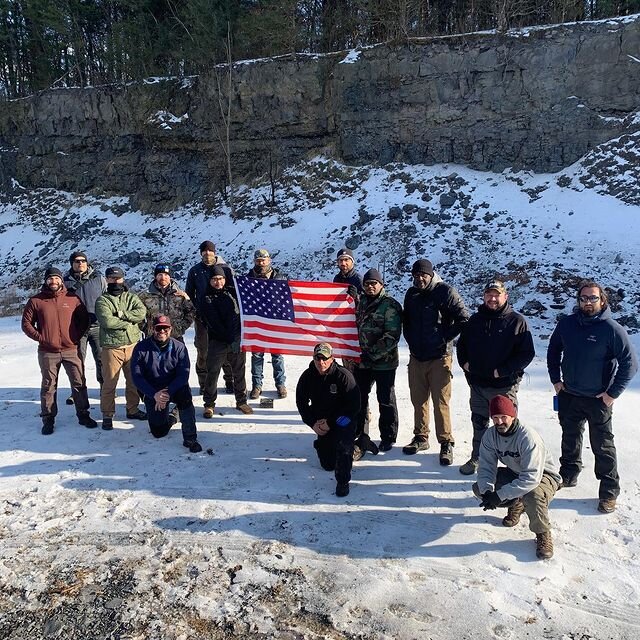Four R’s for Improvement
Article by Rowdy Bricco originally posted at: Spotterup.com
By Rowdy Bricco
Green Ops Instructor, Master in USPSA, IDPA and Steel Challenge
A favorite aphorism of mine is “Growth doesn’t happen without change.” In my work as an instructor for Green Ops (www.green-ops.com) and as a competitor I talk to many shooters who have a desire to improve, have maybe taken a class or two and know some basic drills but have not seen the improvement they had hoped for in their efforts. Using the reasoning of my opening statement it is reasonable that if they are not improving then they need to change something in their practice regimen.
Speaking to Robert Vogel during a class in 2014 he said something which has always stuck with me. When I asked him about the general arc people follow as they try to improve their ability with a firearm, he said this to me, “At some point you have to be able to teach yourself. You need to have the awareness and ability to self-diagnose problems and correct them. Otherwise, you’ll just be doing the same thing all the time and never get any better.” World champions understand the principle as well.
You take classes, talk to friends, watch videos, buy dry fire targets or any of the myriad of training aids to improve and now you are at the point where it is just you. What could you need to change to improve? There are four R’s I use to help guide both myself and others to self-assess what they are doing in their dry fire, live fire, competition, note taking or thought process. They are the four R’s 1. Reference 2. Repeatability 3. Real and 4. Reporting.
A brief summary of each is that you need a known action or data point for reference. Repeatability speaks to both repetitions and consistency. The real stands for looking at things objectively versus subjectively and finally reporting is about what you do with the information and knowledge you derive during your efforts. Now let us look at each one in a little more depth and with some examples of how you might possibly change what you are doing and find the growth you are after.
Reference. By reference I mean something you compare yourself to whether it is a standard or an action. There are known, standard actions to take to draw your pistol from your holster. If you have had them presented to you in a class or other format you have seen an ideal, the reference for you to compare yourself against. Noticing the differences is where you make corrections. In your two-day class you likely had demonstrated for you a way to perform an action and then you attempted to replicate the ideal. Once you are home what becomes important is to be able to compare your actions to the reference, the standard. And then change what you are doing if you are not performing the ideal action.
Another example are the drills we do in our personal practice. A shooter was excited to share with me the drill they had done exclusively for the past two months. They described drawing a small circle on a target and then putting it at a distance where it looked about the width of the front sight post and then doing one and two shot draws at the dot. Other than comparing the dot to the width of the front sight post there are to many inexact items in this drill. The size of the dot, its shape, the coloration, the distance and the procedure. Now if the same shooter had said Bill drill, 4 Aces, Dot Torture, Accelerator, El Presidente or any other known exercise then we would have a common reference to use in our discussion. (And likely the other R’s could be brought into the conversation.)
What should you change then for your growth? If you are going to the range and just making something up to shoot, stop. Shoot standardized drills more than you are currently. Review in your mind or other resources what the ideal is for whatever action you are trying to perform. How could your draw ever improve if you grab the pistol in a different place each time? How will you get an acceptable sight picture if you shoulder the rifle differently every time? Have some reference to reduce the amount of variation in learning something specific. If you have forgotten it or are not sure then get the information again. If you do not know what is the ideal you can not compare yourself to it, to find what you need to change.
The second R, repeatability is closely related to reference, but I also liken it more to your repetitions in practice. You need repetition. You need to be able to repeat what you are doing. If your goal is a 1.0 second draw in a Bill drill and you look at your notes and you see 1.40, 0.99, 1.22, 1.11, 1.44 seconds you do not have a repeatable performance. Why? Maybe you do not use descending par times in dry fire? Go back to reference and compare your actions versus the ideal, discover what needs to be changed. And then repeat the correct action. In the above example five times are listed for the first shot of a Bill drill. Do you honestly think you can make your goal in just five repetitions?
What might you need to change to take advantage of repeatability? Take notes or video of what you’re doing? Do more repetitions at a consistent pace, rather than continual hero or zero efforts? Could having a more consistent practice routine be considered using repeatability to change something to your advantage?
The third R, just keeping it real. By this I do not mean reducing the amount of simulation, what-if or role playing in your training. What I do mean is using a shot timer. Getting real data from what you are doing rather than relying on a feeling. Our brain is not accurate at relaying to our senses a true perception of time. If you are at the range and practicing and your feedback is limited to saying to yourself that was good or that was bad you could be doing more to help your development. The target you are shooting at likely has an ideal place for your shot placement. You have real data about the placement and valuation of the holes you are putting in the target. But do you know the time it took you do it? Do you have real data to gauge your performance versus just feeling like you are doing better or worse?
What can change adding the concept or real to your training? The main one is to start using a shot timer. Use the part time feature in dry fire. Gather information about what you are doing in life fire. You will be able to track your presentations, reloads, transitions, splits and movement. Reference yourself to the ideal standard. You now have a reference point. It gives you repeatability, to look at your progress over time. Make a change by taking feeling out of gauging your performance and gain real data. The second part of this change is recording this data. Which leads to the fourth R, reporting.
The fourth R could also be called record, but I like report as it has a hint of accountability and telling a story. The idea is you have all these data points, but you need to do something with them so free up some of your personal memory space and write them down somewhere. I must admit to at one time recording the data from everything I did, but it was early on and it was exhilarating to track my performance as it changed. Want to know the 3rd split time for the fifth Bill drill I did on November 14th, 2014? I have it in a notebook.
Your notebook is also a great place to leave a copy of your department’s qualification, a classifier you would like to shoot 100%, printed out Dot Torture targets and so on. These are reference points, they are repeatable, they give you real data that can be recorded/reported. Your physical actions have reference points, like where you touch the gun etc. Your actions can be repeatable. When you do them, you will develop data which can be recorded.
You should now notice how each of the R’s have interplay with the others. l these concepts to teach yourself, to assess what you are doing and discover what needs to be changed. I will say it again because I believe it is important, growth does not happen without change. What to be strong, change how much you lift. Want better grades, change your study habits. Want to get the most value from the classes you take, the training supplements you purchase, the time you spend dry firing and each round expended? Then look at what you are doing and ask yourself questions. Is there a gap in your technique or understanding of its application? How repeatable is what you are doing? Are you making judgements from feeling or data? Do you know if you are any better than you were before? To answer these questions, use the 4 R’s and look at reference, repeatability, real and report and you will find what you can change for your growth.
*The views and opinions expressed on this website are solely those of the original authors and contributors. These views and opinions do not necessarily represent those of Spotter Up Magazine, the administrative staff, and/or any/all contributors to this site.
Rowdy’s BIO
Rowdy is a retired Health Physicist who lives in Texas. He worked as a Private Military Contractor during 2007 in Iraq, Kuwait and Qatar providing Anti-Terrorism/Force Protection training to US military personnel and third country nationals. Rowdy previously taught at a large firearms training academy in California where he was the only non-Special Operations individual to successfully complete their instructor development course.
He is a multi-division Master shooter in USPSA, IDPA and Steel Challenge and has vast competition experience on multiple platforms in matches across the United States. He has trained with Bob Vogel, William Go of Academi, Chris White of Aegis Academy, Gunsite Academy and others. Rowdy has been on two seasons of the shooting competition television show “The Right Stuff” shown on The Blaze network.
He has previous professional teaching experience in physics, radiation safety, rock climbing and the Motorcycle Foundation’s Basic Rider Course. He is a certified NRA Pistol Instructor. He also has an EMT-B, is BLS certified, an Eagle Scout, a concealed carry permit holder since 2016 and a purple belt in Brazilian Jiu Jitsu with Andre Galvao at Atos.
When not dry firing or at the range, Rowdy enjoys riding his motorcycles and adding to the list of 26 countries visited.


